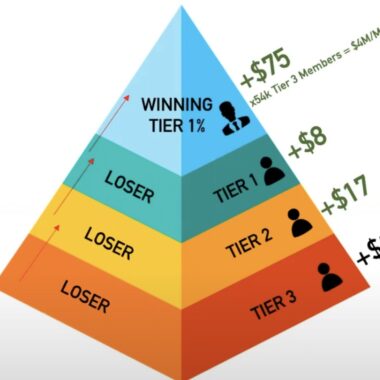There has been much alarm (with reaction from “formative schooling years” parents in mainstream America) over the past two years concerning when and how youth are exposed to the truths surrounding United States social history between predominately black and white people (since 2020). The schism is about how “African-American” (or more poignantly American born African descendants) history should be taught in predominately European- descent (white) schools nationwide. Before one continues any further with this writing, it is important to state a few fundamental components that will help to frame this prose.
First, there is no such thing as unbiased reporting in media and information in general because the people reporting have a personal history that have been greatly shaped by what they learn, how they learn, why they learn, how they have been financed, and what they do with what they have learned. The past for many Americans (whether they are acutely aware of it or not), coincides with the grand narratives that shaped these collective identities and social-economic diversities within the United States. Also, and foremost, these conditions form the agendas that people will adhere toward throughout their lives consciously and (arguably) unconsciously as well regardless of the success or failures that they will encounter with adherence.
Second, when considering what is to be revealed in this writing by this author, readers must consider the U.S. population numbers for each categorized group (on racial lines) along with an account of the “perceived identities” as well. The latter is very important because when many Spanish and Asian descent Americans are asked what they identify as on contracts, applications, permits, and even the national census, most will check the “white” box when deemed convenient; something “blacks” would be harder pressed to exercise to “pass” for lighterskin with darker skin. “Blacks” are not the creators nor gatekeepers (those who can define the terms) of race-based identity concepts. A brief look at the general population numbers in America puts European descents (whites) at roughly 60%, Spanish descents (browns) at 20%, African descents (blacks) at 15%, and Asians / Islanders / and “others” at a combined 5% respectfully. When one takes into consideration the social-historical conditions concerning identity, advantages and disadvantages social-historically engineered to favor whites over blacks, then the number becomes 85% “white” representation vs 15% “black” representation in a country that prides itself on amending its anti-miscegenation laws to present itself as the fairest culturally inclusive nation that the world has ever beheld even through numbers and social-economic organizations in America would illustrate otherwise.
Third, the economy and not forgetting population conventions just explained, (what most will identify as “progress”) guides now what and how the social arena must operate to ensure the primary agenda that has been operating since the beginning of recorded history. This is the steady flow of currency and profits derived from globalized commercialization that can buffer the excluded realities that are created (the unintended consequences) from a system that lives off the planet as opposed to living on it. This behavior greatly accelerated with the age of nautical conquest following the crusades.
Fourth, the term race is a definition that was created out of the medieval ages in Europe to further identify and set apart the different skin tones, colors, and genetic formulative diversities that encompass human life on planet earth. Africans only reacted to these realities. They did not create, nor export the concept of race once it was successfully developed in an once Moorish occupied European lands in Spain and southern France (711-1492) exported from Toledo, Spain through the decree of an edict passed in 1449 followed by the rest of the world through Spanish and Portuguese initiated nautical explorations overseas to avoid land conflict for resources with militarily superior (at that time) Turks and Italians. Therefore, it can be surmised that by the decree of western Europeans beginning in the dawn of the renaissance, that black Africans in sub-Saharan Africa were no more or less seen as this ethnic group or that ethnic group within a multi linguistic and culturally diverse darker pigmented peoples on the African continent beyond their black (dark) skin to be used only when politically convenient.
When readers can honestly consider these four presumptions that have shaped the collective past shared and endured by different groups on the planet, they can begin to develop a healthier empathy and action toward remedying social historical injustices that all people and specifically black people have faced in the making of the latest empire globally with its social-economic seat of power in the western hemisphere with transformative actions.
Table of Contents
What is Critical Race Theory?
According to Reuters contributor Gabriella Borter, Critical Race Theory:
“is an approach to studying U.S. policies and institutions that is most often taught in law schools. Its foundations date back to the 1970s, when law professors including Harvard Law School’s Derrick Bell began exploring how race and racism have shaped American law and society.”
Cross-disciplinary is self-explanatory and true because the subjects of Math, Science, English, and Elective all have a history; a background that led to the development and use of said subjects in the American classroom. Next, to explore how race has been central in the formation and organization of institutions in America that manifest the social realities (laws and customs) experienced by the different groups that constitute the national population before and since its formation into nationhood status in 1789. This concept was developed to “challenge” the mainstream (most predominately European descents parent’s) notions of how the US developed social-economically out of the British colonies to broaden the codes of justice for benefactors at the cost of those targeted against its (justice) protection on racial lines.
Britannia defines Critical Race Theory as:
(An) “Intellectual and social movement and loosely organized framework of legal analysis based on the premise that race is not a natural, biologically grounded feature of physically distinct subgroups of human beings but a socially constructed (culturally invented) category that is used to oppress and exploit people of colour.”
Stephen Sawchuk, a contributor to Education Week.org, states that:
“The core idea (of Critical Race Theory) is that race is a social construct, and that racism is not merely the product of individual bias or prejudice, but also something embedded in legal systems and policies.”
In essence, America is a history of justice for those that can command the most consensus to define it, change it, enforce it, and appropriate it; it is not intended for those that need it. What is justice? In this context, it is the defined and enforced will of those that control the means of production social legislation to safeguard economic endeavors (risks) of the socially protected.
For this author, Critical Race Theory mirrors that of Culturally Responsive Teaching but what makes it different is the importance of the social-historical identity of the teacher disseminating the knowledge. The classrooms of today are grounded in and operate on propaganda as opposed to the dissemination of historical truth. An overwhelming majority of the nation’s classroom teachers (K through college) nationwide over-represent European descents with particularly middle-aged women forming the helm of America’s current educational order. White women benefited most from the affirmative action programs in the 1980s onward through competitive salaries, seasonal bonuses, and job security (most of which were obtained in the field of education).
On the other hand, American born African descent educators are erringly underrepresented. In this orchestrated imbalance of national human resources, a closer look reveals that most of the minority of black educators nationwide are females. This is most certain and especially true in predominantly black neighborhoods in the inner-city schools nationwide. According to Laura Onyeneho’s #WeNeedBlackTeachers Campaign Tackles Nationwide Shortage” article published on Nov 4, 2021, in the defendernetwork.com online news site, black teachers (genders aside) account for roughly less than a tenth of the national population (that’s roughly 7% of the black teachers nationwide compared to whites and white identifiers at % 93 in field respectfully). When these figures are juxtaposed to 15% black and 85% white and white identifying white racial caste buffers nationally, the education system reveals its underpinning social-economic agenda. These numbers illustrate the alluring power of race-based caste propaganda machine and how fear mongering among racial majorities with the backing of less educated or minorities in denial, has created greater censorship in public educational facilities to prohibit the instruction of certain facts to avoid guilt and sour sentiments when confronted with realities that do not position them in a favorable light toward growing minority population numbers that understand these systematic ploys. Given the historical development of blacks collectively in the US since its inception into global affairs at the end of the eighteenth century, this author would demand nothing less than for all the black populace to have unrestricted access to participate and earn in the dissemination of knowledge upon American youth in the institutions nationwide and on all levels of study (from Kindergarten through Doctorate programs) to provide all youth social-economic parity and justice through learning void of past and current fear induced social restrictions. Afterall, blacks account for 15% of the US population; a biracial dichotomy minority group must gain access to allow America to maintain its claim of a post-racial society or else it will remain true to what it has always been.
Blacks that are in the education profession know the dual mandates that define their uniquely oppressive experience in America and have made a conscious choice daily to either uphold contractual standards or to educate the youth to sustain democracy (to ability to agree to disagree without social-economic consequence) without drawing guilt or as Florida Governor Ron DeSantis exclaimed recently, “uncomfortable” sentiments from the racial majority and especially when in the presence of educated black people. This “teaching-while-black” is no different than that of driving, working, and living as a black person in a nation in such a way as to satisfy a nation of mostly white racialists with a socially docile disposition. It is the continuous presence of Eurocentric prejudice and hindrance toward Afrocentric (“black”) empowerment and social-economic progression in a globally indoctrinated and engineered (contrived) anti-black society that wants nothing more than to see the steady disappearance and dissolution of black life worldwide to safeguard scientifically proven (Gregor Mendel bean experiment) genetic inferiorities (melanin deficiency – lighter skin vs. melanin efficiency – darker skin) with engineered media legacies used to promote fictitious realities elevated from being absorbed by foundational ones.
What is Culturally Responsive Teaching?
Culturally Responsive Teaching, is teaching while white and for non-whites, this is teaching like or as whites would instruct. European descents have created and have social-economically weaponized pro and con terms in Culturally Responsive Teaching and (or) vs. Critical Race Theory respectfully to codify and safeguard the continuity of the educational apparatus to specifically keep African descent representation low along with a gender unbalance that overrepresents females to help to sustain the social-economic status quo. This format is advanced to promote and preserve a racialist “white” top-down social hierarchy that characterizes the land and economy of the nation while attempting to champion a multi racial and ethnic post discriminative social-economic order. The populace majorities can make and maintain connections with the dominant language, customs, and experiences that constitute their national identity and agenda in the North of the Western Hemisphere and nothing else.
On NewAmerica.org, contributors credit Gloria Ladson-Billings for introducing “the term culturally relevant pedagogy to describe a form of teaching that calls for engaging learners whose experiences and cultures are traditionally excluded from mainstream settings.” She continues to list three conponents that can lead toward minority student achievement in a conditioned country (and world for that matter) surrounding their existence. These are to “yield academic success… Second, (that) teaching must help students develop positive ethnic and cultural identities while simultaneously helping them achieve academically. Third, (that) teaching must support students’ ability to recognize, understand, and critique current and social inequalities.” What is fails to provide is a framework from that success that can lead to fundamental changes in the United States promised but not delivered by Barack Obama among countless others. To recognize, comprehend, and critique does not lead to transition as witnessed with learning outcomes from previous generations throughout history that rose up to challenge status quo.
According to Understood.org:
“Culturally responsive teaching (CRT) is a research-based approach to teaching. It connects students’ cultures, languages, and life experiences with what they learn in school. These connections help students access rigorous curriculum and develop higher-level academic skills.”
At first glance, this reads as a pure bread and straight forward assertion. “Research-based” learning applied in the formulation of this definition is primarily concerned with identifying what matters with what the racial majoritiesin the US experience ranging across a strobe of topics like health, science, mathematics, and many others. Students in grade school are certainly being connected to the public majority (their teachers) that they will more than likely encounter and form bonding relationships with beyond their formative years, family, and friends in the labor society. The latter portion of the definition above is subjective and more so strictly contingent upon the fulfillment of continuous exposure to those that are closer to the self in appearance, experience, and cultural context outside of closer relations (family and friends). As a result, it is no surprise that those that are further away from the mainstream identity often find themselves excluded from those enabled to earn and contribute to the preservation and growth of the social economy in America.
Why We Can Teach Culturally Responsive Teaching in Schools
Culturally Responsive Teaching is accepted because it recognizes the components that are needed to maintain a national identity juxtaposed to that of the growth of narratives that run counter to mainstream American history. It is simply needed to maintain only a positive perspective that can continue to safeguard America’s social coherency. The mainstream calls any themes that fall outside of the realm of presenting history as a support for American nationalism is deemed a “counterculture” (aka black people’s history in America NOT “African-American” history – a majorities cooperative terminology) along with the rest of the non-white (lighter pigmented) world that does not express an enthusiasm with a pro-American social-historical narrative. These components are educating the youth with a social-historical narrative that yields unquestionable pride toward American patriotism and economy regardless of the historically unrecompensed black blood, sweat, and tears of those that were stepped on to solidify a super nation-state status.
Culturally Responsive Teaching is accepted because it insists on championing every issue under the sun while steering young learners away from the underlining multi-generational problems that persists and have illustrated America as a racial caste order between most whites and white identifiers and blacks despite publicized declarations of the opposing. It is interested in educating its youth on the movement of same sex relationships or promoting greater safely and security for Asian Americans (honorary whites and a part of those that identity with the Eurocentric racialized social order juxtaposed to Africans in and outside of America). This form of teaching is interested in focusing on voter issues without exploring the core issues that constitute voting and political representation in general and particularly for American born black minorities in America.
Culturally Responsive Teaching is accepted because it engages students with a reality that most teachers, administrators, and parents face in the US. This is the challenge to maintain the narrative that has defined America since 1789; one as a nation of justice for all. A nation of justice for all that are involved with maintain a social-economic order that greatly favors the majorities of peoples that call America home on a top-down color caste backdrop and social-historical context. Moreso, it is to safeguard the social-economic gains and to delay the resource needs of the descendants of those that were subjugated outright to labor to sustain and enrich Eurocentric realities. The current position is for majorities to allow global integration into the US so that the voting booths will eventually remove the descendants of a history that has run counter to the American populace at large to avoid guilt on the light end and economic restitution on the heavier end. Culturally Responsive Teaching is accepted because it is a code of what and how teachers can continue to indoctrinate the public at large without consequence but rather the reward of have a public continue to buy into and finance the agenda of pro-white and anti-black structural realities.
Why We Can’t Teach Critical Race Theory in US schools
When this writer states “we” in the subtitle above, this is referred to specifically black educators nationwide. If “we” will do teach, these truths will expedite the dynamic social shifts that country leaders may not be able to skillfully circumvent. Critical Race Theory cannot be taught in US schools because it encourages students to critically think; think and act critically toward living to solve long standing social-economic disparities that have and continue to characterize human history as opposed to accepting and reinforcing them. Critical Race Theory cannot be taught in US schools because when too many majority children in America are exposed to the truth of specifically American born non-white and non-white identifying populaces, readers and learners depending on their social-historical background and knowledge base will (mostly when readers consider the population simplified earlier) either feel resentment, uncomfortable, or empowered to act and create contraries to defy facts. This possesses a colossal danger for the top-down color caste in America parading as a democracy for all because the very notion of this challenge by critical thinkers of all social, ethnic, and economic standings, brings about the question, notion, and indictment of institutional illegitimacy.
Critical Race Theory cannot be taught in US schools because those that identify or and are of European descent cannot effectively (state and be taken seriously and earnestly at word and face value) teach it to begin with because it is a subject that challenges mainstream social-historical assumptions. In essence, Europeans can only teach Culturally Responsive Teaching whereas Africans and black diasporas (particularly American born African descents) can teach both subjects granted that the individuals possess a life that identifies with the history that has been produced concerning racial compositions in the United States that runs contrary to mainstream adaptations. The blacks that can’t teach Critical Race Theory are not because they do not either know or identify with it. In the mind of the logically and ironically (but not so for a fixed system at large), blacks in this category will often find themselves working in the profession longer than those that are social-historically multiverse. Based on what has been reflected above and in American history, both Critical Race Theory and Culturally Responsive Teaching is the same. The difference is contingent upon the race and social context (defined from Eurocentric nomenclature coming out of its Renaissance period); who can teach facts in the US vs who and what can be heard to learn of and from them.
Sources Used
Borter, G. (2021, September 22). Explainer: What ‘critical race theory’ means and why it’s igniting debate. Reuters. Retrieved February 27, 2022, from https://www.reuters.com/legal/government/what-critical-race-theory-means-why-its-igniting-debate-2021-09-21/
Britannica, The Editors of Encyclopedia. Critical race theory. Encyclopedia Britannica, 21 Sep. 2021, https://www.britannica.com/topic/critical-race-theory. Accessed 27 February 2022.
Educators Team at Understood at Understood. (2021, May 28). What is culturally responsive teaching? Understood. Retrieved February 27, 2022, from https://www.understood.org/articles/en/what-is-culturally-responsive-teaching.
Ladson-Billings, G. (n.d.). Culturally responsive teaching. New America. Retrieved February 27, 2022, from https://www.newamerica.org/education-policy/reports/culturally-responsive-teaching/understanding-culturally-responsive-teaching/
Onyeneho, L. (2021, November 4). #Weneedblackteachers campaign tackles nationwide shortage. DefenderNetwork.com. Retrieved February 27, 2022, from https://defendernetwork.com/news/local-state/weneedblackteachers-campaign-tackles-nationwide-shortage/
Sawchuk, S. (2022, January 19). What is critical race theory, and why is it under attack? Education Week. Retrieved February 27, 2022, from https://www.edweek.org/leadership/what-is-critical-race-theory-and-why-is-it-under-attack/2021/05





